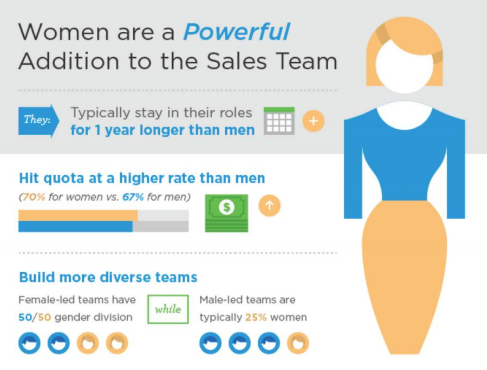
Finalizing your 2017 B2B Marketing strategy? Make sure you check in on what your B2C colleagues are doing too. In the annual “State of the Connected Customer” report for 2016 by Salesforce Research, surveyed marketers identified getting smart about personalization as a top requirement for meeting their marketing expectations in 2017.
Personalizing consumer messages has become the status quo for most B2C marketers. I have nearly a dozen emails sitting in my inbox, from this weekend alone, recommending cosmetics for my personal skin type and mobile apps for my personal habits. However, personalized messages aren’t just for B2C. Even for B2B, buyers increasingly voice that they want to be treated like humans, not numbers.
Forbes predicts that in 2017, B2B marketing focuses will include:
The two trends aren’t so separated. The answer to humanizing B2B messages with personalization can actually be found in those new data and analytic technologies. In the coming year, personalized experiences for business buyers will emanate from multiple channels including deployment of digital content, social interaction, and user communities.
The 2016 “State of Marketing” report by Salesforce Research shows over half of marketing leaders worldwide are set to increase spending on marketing tools and technology over the next couple years. The investments are driven directly by customer demand. For example,
Image: “State of the Connected Customer” Salesforce Research
For a tangible representation of this statistic, consider the possibilities of personalized, B2B marketing.
Targeted Messages and Target Markets
Your internal data reveals businesses are more likely to invest in your consulting services within a quarter of a new COO coming in. Using external data analysis of executive movements, you can deliver personalized messages to your target customers, automatically and effectively.
Engagement and Relationships
Your hospitality special events team is looking for opportunity indications around a prospect such as new industry conferences or changes in marketing spending. Events are automatically discovered, enabling your personalized messages to potential buyers that encourage your hospitality services over those of your competition.
With in-depth data and analytics becoming increasingly available, effective and personalized B2B marketing has become possible. It’s time to see your business buyers as more than just businesses.

Across the globe, big data and IoT are revolutionizing Conservation efforts.
A concept first named in 1985, the Internet of Things (IoT) is undergoing a modern revival thanks to advances in big data, machine learning, and artificial intelligence. As consumers rush towards the benefits of wearable technology and smart house applications, a handful of revolutionary thinkers are applying the technology to benefitting our earth.
Smart Cities
30% of U.S. greenhouse gas emissions in 2014 came from electricity and heat production. In reaction, cities are incorporating climate change, resilience, and sustainability goals into their smart city aspirations. By 2020, half of all smart city objectives will include these concerns, as reported by @Gartner. Part of the smart city movement, Atlanta, Georgia has already begun incorporating sustainability into its city grid.
A smart cities innovator, Ingenu recently announced an Atlanta project. The Atlanta Machine Network intends, as stated by Peter Murray of @Dense Networks, to connect and monitor “everything from street lighting, traffic signals and parking” in an effort to reduce energy and water usage city-wide.
Conservation of Marine Mammals
Marine residents of the Indo-West Pacific waters, dugongs are threatened by “local fishing, destruction of habitat and illegal hunting” rendering them vulnerable for extinction. To help, IoT cloud provider, @Kii, has been supporting @Smart Earth Networks (SEN) and @Community Centered Conservation (C3) in a “citizen science” conservation project in the Busuanga region of the Philippines. The project equipped fishermen with basic smartphones, provided by local company @Cherry Mobile, enabling them to take photos when they spot the vulnerable marine mammals. Photos are uploaded via SEN’s app to Kii’s cloud, indicating dugong location through GPS. This allows C3 to map and evaluate the local dugong population for future, actionable, protection recommendations.
Close relatives of the dugong, manatees are also at risk. A project started in November, applies AI technology to manatee conservation efforts. Owned by @Google, AI protocol @TensorFlow is being taught with the aid of machine learning to spot manatees in aerial drone-produced photos. The ability would save hours of researchers’ time and lead to quicker, more frequent conservation efforts.
Anti-Poaching Efforts
Most threatened species, including the manatees and dugongs, lose a large number to poaching. AI platform, @Avata, is being applied to anti-poaching efforts in Uganda. AI learns poacher behavior and how to arrange effective security patrols so wildlife rangers can stay a step ahead of poachers.
Self-Awareness
Though IoT, AI, and big data are becoming extraordinary tools for environmental efforts, they are innately part of the problem. In the U.S. alone, data center electricity consumption is expected to reach an annual 140 billion kilowatt-hours by 2020, equivalent to an annual 100 million metric tons of carbon pollution. Fortunately, many of these companies are working towards self-improvement.
For example, with data centers accounting for 6.9% of all energy consumption in Singapore, active data companies are applying environmentally friendly practices:
In America, @GE and @Intel combined their respective offerings, Predix and gateway technologies, to create intelligent lighting – a networked lighting system that aims to improve efficiency. Each have applied the system to their own infrastructures including GE’s factory, Intel’s Arizona plant, and, soon, at Intel HQ in Santa Clara.
The Market
Through IoT, it is thought that information technologies can reduce carbon dioxide emissions globally by 20%. With major companies entering the IoT market, the percentage may be even greater. From telecommunications companies like Verizon to platform providers like Salesforce to IBM, companies across the board are making moves into IoT.*
*Entry moves provided by FirstRain market analytics
This blog is part of an Industry & Market Series – analyzing what FirstRain users are tracking at the moment in order to gain advantage for the moment.

Women hold proportionally fewer sales roles than men and the number is dropping. The same researchers that investigated the personas of top salespeople discussed in my recent post also considered the differences between men and women in sales roles. The study estimated, for technology companies, “the sales force composition to be over 85% male.” Women have notoriously filled fewer positions in white-collar fields than men. For example, last year a report highlighted that “fewer large companies are run by women than by men named John.” This year, @CatalystInc discovered women only hold 4.6% of CEO positions at S&P 500 companies. Why are there few, and falling numbers of, women in these professional roles?
Velocify’s research report and companion piece to the “Account Based Selling: Stop Selling & Start Guiding” study, “The Similarities and Differences Between Men and Women in Sales”, revealed significant commonalities between the genders in terms of personality and skill set and notable deviations in those perceptions particularly influenced by external factors.
The Fisherwoman
Many surveyed women fell into the top-performing persona that makes up the Fisherman sales approach of my previous post with valued traits including patience and empathy. The question with the most significant differentiation between the genders’ answers was that on the favorite subject in school. While the majority of the women chose Language and English Studies, the top answers among males were History and Math. This question, thought to reveal the most about a potential salesperson’s perceptions and communication style, now becomes even more significant as it highlights a divide that starts long before career selection takes place.
The Female Perspective
Despite attempted awareness, gender imbalances in white-collar positions continue. The study found women consistently rated their levels of success in their careers lower than men. This is not due to skill level but rather the perception that women in professional roles tend to have. A survey participant stated “I find that in general, women are more likely to pass off success to their team or others.”
More women said they ended up in a tech sales position “by chance” than men, as women are less likely to be led to the industry in career guidance. In relation, an Open University poll this November found that many women did not follow a STEM career path because of lack awareness and role models. For sales, front-of-mind leaders are primarily men. For example, my own post referenced Don Draper as a stereotype for the successful salesperson.
It Starts Early
The differing paths for the two genders start early. Intel’s study this September found that still, “pink and blue toy categories are dominant in society.” It’s nothing new to hear that little girls are pushed to dolls and boys to building tools. What is new is the study’s finding that, even for toys geared to both genders, the boy version of the toy is more complex and, therefore, creates greater early interest and confidence in engineering skills.
Gender Imbalance Can Lead to Loss
For every girl with the ideal persona and talent to become a top salesperson that is led away from your field, you lose the opportunity for a stronger staff, improved innovation, and increased wins. For those still not hiring enough women, look out. Women are starting businesses at 1.5 times the national average, according to @womenwhotech. You might just be creating your own competitors.
Need more Proof? The Women in Sales Awards North America division released a informative infographic on the benefits of women in sales roles in their June 2016 issue. Read more facts by WIS and more about the great women in sales across North America: @WISAmerica

